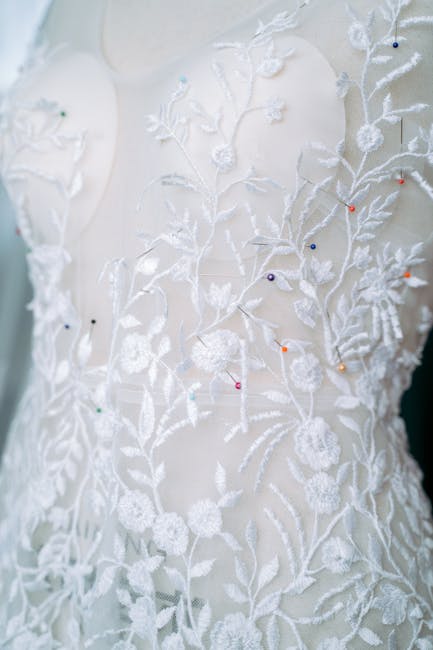Fabric
Introduction
Fabric, the foundation of clothing, home décor, and countless other applications, is more than just woven threads. It’s a versatile material crafted from natural or synthetic fibers, each possessing unique properties that dictate its suitability for various purposes. Understanding fabric types, their characteristics, and their uses is crucial for designers, consumers, and anyone interested in the textile industry. This article explores the diverse world of fabric, providing a comprehensive overview of its construction, types, and applications.
Main Sections: Exploring the World of Fabric
Fabric Construction: How It’s Made
Fabric construction refers to the methods used to create a textile. The most common methods include:
- Weaving: Interlacing two or more sets of yarns at right angles. Examples include cotton, linen, and denim.
- Knitting: Interlocking loops of yarn. This method creates a stretchy and comfortable fabric. Examples include jersey, rib knit, and fleece.
- Non-Woven: Bonding fibers together using heat, chemicals, or mechanical processes. These fabrics are often used for disposable items like wipes and filters.
- Felting: Matting fibers together using moisture, heat, and pressure. Wool is commonly used for felting.
- Braiding: Intertwining three or more strands of yarn to create a strong and decorative fabric.
Types of Fabric Fibers
Fabric fibers are broadly categorized into two main groups:
Natural Fibers
Derived from plants or animals, natural fibers are known for their breathability and comfort.
- Cotton: Soft, absorbent, and widely used for clothing and home textiles.
- Linen: Strong, durable, and breathable, made from flax fibers.
- Wool: Warm, resilient, and naturally wrinkle-resistant, sourced from sheep.
- Silk: Luxurious, smooth, and lustrous, produced by silkworms.
- Hemp: Strong, sustainable, and environmentally friendly, derived from the hemp plant.
Synthetic Fibers
Manufactured from chemical compounds, synthetic fibers offer a wide range of properties, including strength, durability, and wrinkle resistance.
- Polyester: Strong, durable, wrinkle-resistant, and often blended with natural fibers.
- Nylon: Strong, elastic, and resistant to abrasion, commonly used for hosiery and activewear.
- Acrylic: Soft, warm, and similar to wool, but more affordable and easier to care for.
- Rayon: Soft, absorbent, and drapes well, made from processed wood pulp.
- Spandex (Elastane): Highly elastic and used to add stretch to fabrics.
Fabric Properties and Characteristics
Understanding fabric properties is crucial for selecting the right material for a specific project. Key properties include:
- Durability: Resistance to wear and tear.
- Absorbency: Ability to absorb moisture.
- Breathability: Ability to allow air to pass through.
- Drape: How the fabric hangs or falls.
- Wrinkle Resistance: Ability to resist wrinkling.
- Elasticity: Ability to stretch and return to its original shape.
- Colorfastness: Resistance to fading or bleeding.
Common Fabric Applications
The versatility of fabric leads to its use in a vast array of applications:
- Clothing: From everyday wear to formal attire, fabrics are essential for creating clothing.
- Home Textiles: Fabrics are used for bedding, curtains, upholstery, and rugs.
- Industrial Applications: Fabrics are used for filters, geotextiles, and protective clothing.
- Medical Textiles: Fabrics are used for bandages, surgical gowns, and implants.
- Automotive Industry: Fabrics are used for upholstery, airbags, and tires.
Conclusion
Fabric is a fundamental material that shapes our lives in countless ways. By understanding the construction methods, fiber types, properties, and applications of fabric, we can make informed decisions about our clothing, home décor, and other textile-related purchases. Whether you’re a seasoned designer or simply curious about the materials around you, exploring the world of fabric offers a fascinating glimpse into the intersection of science, art, and everyday life. As technology advances, we can expect to see even more innovative and sustainable fabrics emerge, further expanding the possibilities of this versatile material.














Post Comment